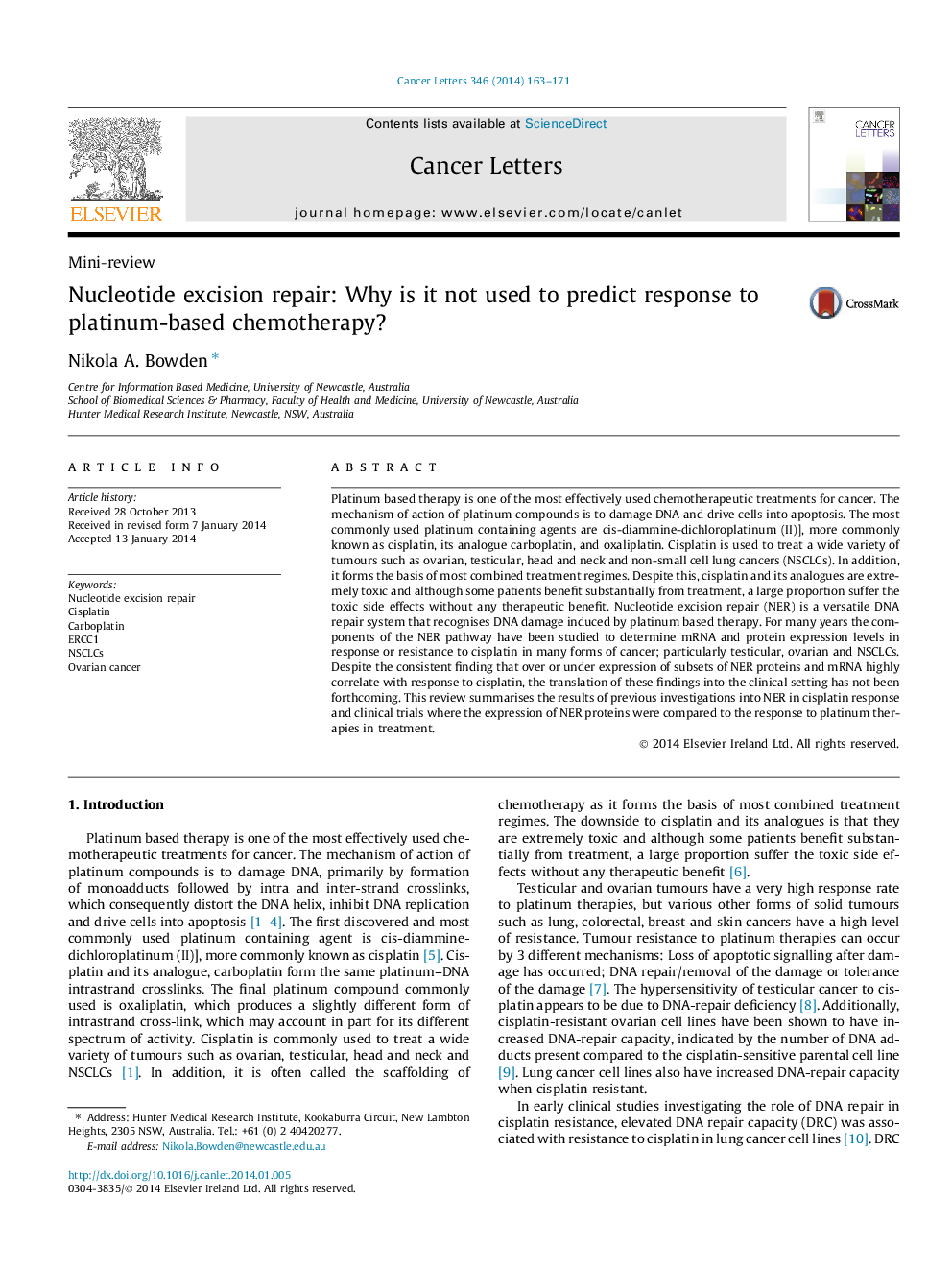| کد مقاله | کد نشریه | سال انتشار | مقاله انگلیسی | نسخه تمام متن |
|---|---|---|---|---|
| 10899819 | 1084413 | 2014 | 9 صفحه PDF | دانلود رایگان |
عنوان انگلیسی مقاله ISI
Nucleotide excision repair: Why is it not used to predict response to platinum-based chemotherapy?
ترجمه فارسی عنوان
تعمیر مجدد نوکلئوتید: چرا برای پیش بینی پاسخ به شیمی درمانی پلاتین استفاده نمی شود؟
دانلود مقاله + سفارش ترجمه
دانلود مقاله ISI انگلیسی
رایگان برای ایرانیان
کلمات کلیدی
موضوعات مرتبط
علوم زیستی و بیوفناوری
بیوشیمی، ژنتیک و زیست شناسی مولکولی
تحقیقات سرطان
چکیده انگلیسی
Platinum based therapy is one of the most effectively used chemotherapeutic treatments for cancer. The mechanism of action of platinum compounds is to damage DNA and drive cells into apoptosis. The most commonly used platinum containing agents are cis-diammine-dichloroplatinum (II)], more commonly known as cisplatin, its analogue carboplatin, and oxaliplatin. Cisplatin is used to treat a wide variety of tumours such as ovarian, testicular, head and neck and non-small cell lung cancers (NSCLCs). In addition, it forms the basis of most combined treatment regimes. Despite this, cisplatin and its analogues are extremely toxic and although some patients benefit substantially from treatment, a large proportion suffer the toxic side effects without any therapeutic benefit. Nucleotide excision repair (NER) is a versatile DNA repair system that recognises DNA damage induced by platinum based therapy. For many years the components of the NER pathway have been studied to determine mRNA and protein expression levels in response or resistance to cisplatin in many forms of cancer; particularly testicular, ovarian and NSCLCs. Despite the consistent finding that over or under expression of subsets of NER proteins and mRNA highly correlate with response to cisplatin, the translation of these findings into the clinical setting has not been forthcoming. This review summarises the results of previous investigations into NER in cisplatin response and clinical trials where the expression of NER proteins were compared to the response to platinum therapies in treatment.
ناشر
Database: Elsevier - ScienceDirect (ساینس دایرکت)
Journal: Cancer Letters - Volume 346, Issue 2, 1 May 2014, Pages 163-171
Journal: Cancer Letters - Volume 346, Issue 2, 1 May 2014, Pages 163-171
نویسندگان
Nikola A. Bowden,
